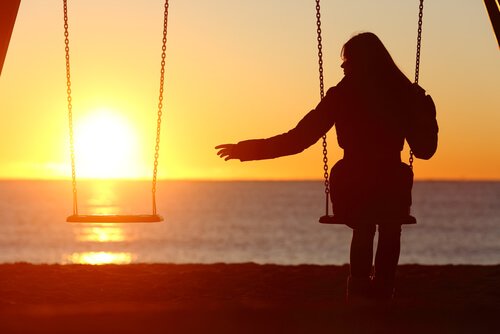Myths about grief: traps when managing loss

There is as much grief as there are important losses, and every person goes through it differently. However, as it happens with other phenomena, there are some myths about grief that should be clarified, especially because they condition the emotions that come with one’s own grief.
Many of the beliefs we have been learning throughout life are formed by myths about grief that make us vulnerable. Being aware of the pain caused by loss does not weaken us, it helps us accept this human and adaptive response as something natural.
Myths about grief
Loss, and all that comes with it, are part of life. Nontheless, we frequently minsunderstand the grief that comes with loss. That is why it’s necessary to examine those myths about it that are still present in the collective unconscious:
- You must be strong. Let’s banish the idea that sadness is the feeling of the weak, of the less resilient. In order to not portray the image of someone fragile, we put on a mask while we’re crumbling inside. Moreover, we do it so neatly that we make empathy toward us impossible, which leads to people being less likely to help us.
- Grief is like depression. It is true that both share some similarities, such as crying, deep sadness, apathy, and detachment but remember that grief is just a normal reaction upon a significant loss.

- Grief happens only when a loved one dies. Grief is a normal response upon experiencing any kind of loss: a relationship, a pet, health, an object and more are all kinds of loss that can motivate a grieving process. Often, all these kinds of grief are “silenced” even more, less acknowledged, more crippling.
- Medication is necessary to mitigate the pain and anxiety associated to grief. This is not an illness that needs to be cured, and emotions associated with it are completely normal. In some cases medication can be indicated but the usual symptoms are a sign of needing patience and sympathy.
- It’s better not to talk about it. Friends think that the best way to help is by avoiding the subject and distracting the person. In reality, people who are suffering usually want and need to talk about their loss.
Other wrong beliefs about grief
Here are some other myths or usual things we hear during grief that we do not encounter as often, but still exist:
- If you don’t cry, then you’re not really sad about the loss. Crying is not the only response of our bodies when we lose something, nor is it a necessary manifestation of sadness. People can feel deep pain and show it in many other ways.
- Grief is a linear process. Many authors have proposed “common stages” in a it, but it is still something very personal.
- Grief and mourning are the same thing. Grief is about our own experience and it’s our personal response to loss. Mourning is the external expression of grief, the social response we openly share with others.
- When death is “natural”, it does not cause grief. The death of an elder may be more expected; however, this does not mean that the grieving process will be less hard.
- You must go on. Just as we adapt to the grieving process, we’ll take control of our lives again, but the relationship with what we lost will always remain in our memory and our heart.
- Whoever cries the most, is the one who grieves the most. Grief does not reduce itself to only sadness and crying. This process also includes guilt, rage, fear, embarrasment, etc. Moments of joy and peace may also appear, among other positive things.
- Time heals everything. Grief is an adaptive response that never really ends, we learn to live with it through time. But some emotions may re-emerge at any moment while remembering our loss.

Other lies we tell ourselves
- Fight fire with fire. Phrases like “there are plenty of fish in the sea” teach us that in order to overcome a loss we must replace it, but this is a huge mistake. Replacement will not provide the relief we seek.
- It’s better to not know the details of the incident or seeing the body of the deceased. Knowing the details linked to the death of a loved one helps us accept the reality of the loss and reduces confusion. However, it is true that in “shocking” cases we must explain verbally and very carefully to others what they should expect.
- Believing that seeing the deceased person means you’re losing your mind or severely depressed. In the beginning it is somewhat common to see or feel the dead person. Nontheless, it is very important to pay attention to those signs and search professional help if it’s convenient.
- The more you loved them, the harder it will be to overcome. There are no rules to the grieving process, since it’s a personal experience that depends on lots of factors, not only about love.
- The grieving person must return quickly to their activities. “The busier the better”. It is convenient that the person takes some time to reflect. A quick return to daily activities may affect grief, preventing it from happening in a satisfactory way.
- Kids are not capable of understanding death. It’s better to deny everything and protect them from reality. Kids catch up quickly to the emotional reactions of people and thinking that they don’t know what is happening is a big mistake. It is important that kids go through the grieving process at the same time as everyone else in the family.
Breaking those myths about grief is important to help people deal with this natural process. The path that leads to healing the pain caused by loss means moving toward that pain. Allowing ourselves to feel what we feel and express it is the true essence of dealing with it.
This text is provided for informational purposes only and does not replace consultation with a professional. If in doubt, consult your specialist.








